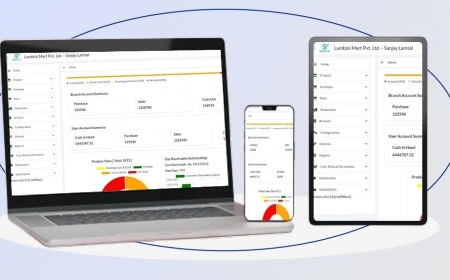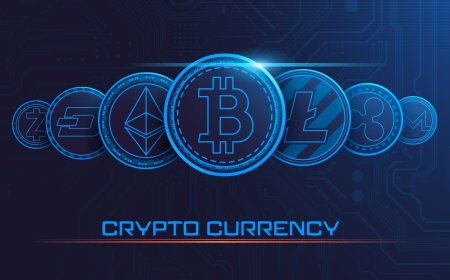Stablecoins vs Traditional Currency: Understanding the Key Differences and Their Role in the Future of Money
As digital finance grows, stablecoins are gaining attention as an alternative to traditional currency. This guide explains how stablecoins differ from fiat money, their advantages and risks, and what their rise means for payments, investing, and the global economy in 2025 and beyond.

The rise of cryptocurrencies has introduced many new concepts to the financial world, and stablecoins are one of the most significant. Designed to bridge the gap between highly volatile crypto assets and traditional fiat money, stablecoins are becoming an essential part of the digital economy.
But how do stablecoins compare to traditional currency? Are they a replacement, a complement, or something entirely different? This article explores the similarities, differences, and implications of stablecoins in 2025.
1. What Are Stablecoins?
Stablecoins are digital assets designed to maintain a stable value by being pegged to a reserve asset like a fiat currency, commodity, or basket of assets.
There are three main types of stablecoins:
Fiat-Collateralized
Backed 1:1 by traditional currencies held in reserves.
-
Example: USDT (Tether), USDC (USD Coin)
Crypto-Collateralized
Backed by cryptocurrencies and overcollateralized to manage volatility.
-
Example: DAI from MakerDAO
Algorithmic
Use algorithms and smart contracts to adjust supply and demand, keeping price stability without collateral.
-
Example: Frax
2. What Is Traditional Currency?
Traditional currency, or fiat money, is government-issued legal tender not backed by a physical commodity but by trust in the issuing government.
-
Examples: US Dollar, Euro, Indian Rupee
It is regulated by central banks and used for all economic transactions in most countries.
3. Key Differences Between Stablecoins and Traditional Currency
| Feature | Stablecoins | Traditional Currency |
|---|---|---|
| Form | Digital only | Physical and digital |
| Backing | Fiat, crypto, or algorithmic | Trust in government |
| Control | Issued by private entities or protocols | Issued by central banks |
| Transaction Speed | Near-instant across borders | Varies, often slower |
| Volatility | Low (if properly managed) | Very low (but inflation-prone) |
| Accessibility | Requires internet and crypto wallet | Widely accepted globally |
| Privacy | Limited or transparent | Varies by jurisdiction |
4. Advantages of Stablecoins
Faster Transactions
Cross-border payments with stablecoins can settle in seconds, compared to days with traditional banking systems.
Lower Costs
No intermediaries mean lower transaction fees, especially for international remittances.
Programmability
Stablecoins enable smart contracts for automated payments, escrow services, and decentralized finance (DeFi) applications.
Accessibility
Anyone with a smartphone and internet connection can hold and transfer stablecoins, offering financial inclusion to the unbanked.
5. Advantages of Traditional Currency
Legal Recognition
Fiat money is accepted everywhere within its jurisdiction and required for paying taxes.
Stability and Oversight
Government-backed and regulated, fiat money benefits from central bank policies that stabilize economies.
Physical Form
Cash remains useful in areas with limited digital infrastructure.
6. Challenges of Stablecoins
Regulatory Scrutiny
Governments are wary of privately issued money competing with their monetary systems.
Trust and Transparency
Some stablecoin issuers face criticism for lack of transparency about their reserves.
Technology Dependence
Requires access to digital infrastructure, which can exclude populations without internet or devices.
7. Challenges of Traditional Currency
Inflation Risk
Central banks can print more money, leading to currency devaluation.
Slow Cross-Border Transfers
International transactions often involve delays and high fees.
Limited Use in Digital Ecosystems
Traditional currencies cannot directly interact with blockchain-based applications without intermediaries.
8. The Role of Stablecoins in 2025
In 2025, stablecoins have grown beyond niche usage. They are now central to:
-
Decentralized Finance (DeFi): As collateral for lending, borrowing, and yield farming.
-
Cross-Border Payments: Offering faster and cheaper alternatives to SWIFT.
-
Tokenized Economies: Powering in-game currencies, NFTs, and digital marketplaces.
Even governments are exploring central bank digital currencies (CBDCs) inspired by stablecoin models.
9. Are Stablecoins Replacing Traditional Currency?
While stablecoins offer clear advantages in speed and cost for digital transactions, they are unlikely to replace fiat currencies entirely. Instead, they complement traditional money by:
-
Acting as a bridge between fiat and crypto
-
Enabling financial innovation in areas where fiat systems are slow or expensive
-
Serving as a testing ground for CBDC development
10. The Future of Money: A Hybrid System?
The future likely lies in a hybrid system where:
-
Traditional fiat remains dominant for legal tender and offline transactions
-
CBDCs emerge as government-backed digital money
-
Stablecoins thrive in DeFi, global trade, and digital ecosystems
This coexistence allows users to choose the best tool for their needstraditional or digital.
Final Thoughts
Stablecoins and traditional currency each have strengths and weaknesses. In 2025, stablecoins are not a replacement for fiat but a powerful addition to the financial toolkit, offering speed, flexibility, and innovation.
As the world moves further into a digital-first economy, understanding both forms of money will be critical for consumers, businesses, and investors navigating this evolving landscape.
Important Links




























